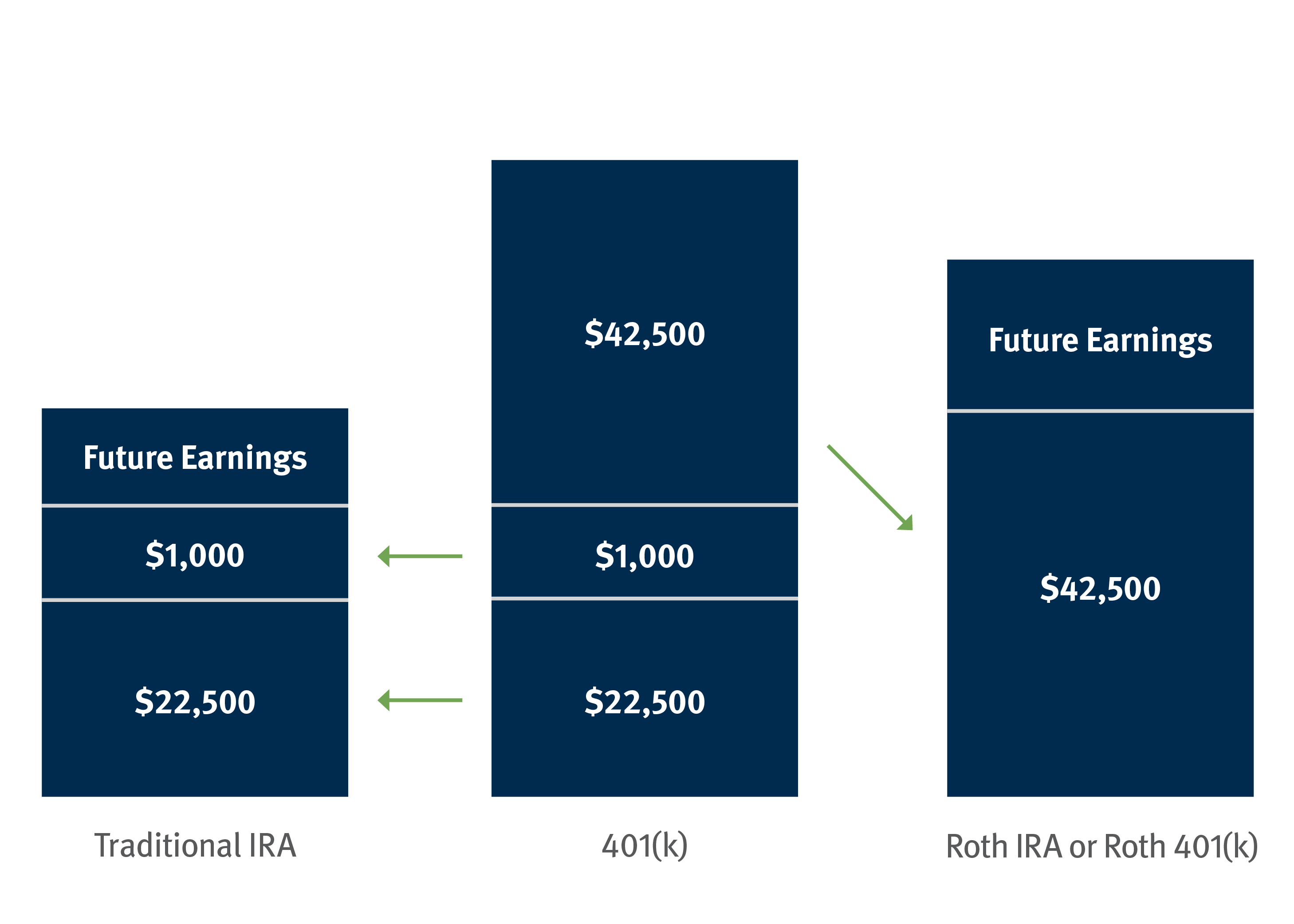
The Mega-Backdoor Roth
Are you looking for a strategy that will allow you to create more tax diversification in retirement and fund a Roth IRA with amounts in excess of your annual contributions? For 2023, Roth IRA contributions are limited to $6,500 ($7,500 if age 50 or older) and Roth qualified plan salary deferral contributions are limited to $22,500 ($30,000 if age 50 or older). If you’re looking to sock away more Roth dollars over and above the Roth IRA and/or Roth qualified plan salary deferral limits, you may be able to do so by executing the mega-backdoor Roth strategy.
In order to be eligible for the mega-backdoor Roth, your employer-sponsored qualified plan must allow for after-tax contributions and in-service withdrawals or in-plan conversions. The strategy is a two-step approach:
1. Make an after-tax contribution to your qualified plan
2. Roll the after-tax contribution to a Roth IRA or convert the after-tax contribution to a Roth qualified plan
Benefits
- Tax-free growth; tax-free earnings after five years and age 59½
- Hedge against future tax rate hikes
- No income limits for after-tax contribution eligibility (unlike a Roth IRA)
Considerations
- Must be eligible for a qualified plan with after-tax contributions
- Following a conversion, Roth qualified plan assets may not be available until a triggering event occurs
- After-tax contributions by certain employees may force the qualified plan to fail actual contribution percentage (ACP) testing

Hypothetical Example (See Diagram)
401(k) Employee Contributions:- $22,500 pre-tax salary deferrals
- $42,500 after-tax contributions
401(k) Employer Contribution:
- $1,000 match
Total between all employee and employer contributions cannot exceed $66,000 ($73,500 if age 50 or older) for 2023.
Roll after-tax contributions of $42,500 to a Roth IRA or convert to a Roth 401(k); future Roth earnings will be tax-free after five years and age 59½.
Upon a triggering event like separation from service, roll pre-tax salary deferrals and employer contributions to a traditional IRA.
If you’re not utilizing the mega-backdoor Roth strategy, you may be missing out on an exceptional opportunity. As a plan sponsor, consider amending your plan document to allow for after-tax contributions. As a plan participant, reach out to your company’s benefits specialist to discuss your after-tax contribution options.
Contact a Stifel Financial Advisor today to review your qualified plan funding options. It is always recommended that you seek the aid of a competent tax advisor or accountant to assist with tax advice and guidance.
1122.5078864.1
